The five-sided structure, a solitaire in the urban landscape, is clearly perceived as a new element at the university, which uses the large forecourt with the open stairway to link the city and the campus. The special facade consisting of oppositely inclined, blue-tinged glass and photovoltaic elements has been designed to perfectly suit the orientation and incidence of solar radiation. A window alongside the open stairway offers passersby a view into the energy centre of the zero emission building that meets Passive House standards. In addition to the rooms for the energy centre NEW, the Blauhaus building accommodates various educational and administrative institutions of Hochschule Niederrhein, the university library, the start-up centre “Blauschmiede” with offices for new business founders, as well as the energy laboratory “Innovatorium” for pupils and students.
Future-oriented business and science institutions require an exchange of information among themselves and with the public. The NEW-Blauhaus building on the campus of Hochschule Niederrhein in Mönchengladbach perfectly connects these three elements with the result that several joint wishes could be fulfilled: an increase of cooperation between science and the energy industry, a strengthening of the location and the opportunity to make innovative energy technologies accessible to the public. The aim was to focus on the visible use and not the didactical principles of energy.
Low-resource technologies complement each other and determine the architecture of the zero emission building constructed according to Passive House standards in an unmistakable way. The various users accommodated in the state-of-the-art energy efficiency centre are immediately associated with this subject matter: the energy and water utility company NEW with its department energy-related services, the University of Applied Sciences, Hochschule Niederrhein, with a variety of training, research and service facilities, the university library, as well as a start-up centre for innovative businesses in the energy sector. All institutions work, both individually and as part of a team, on the continuous development of the corresponding technologies and their application.
From an urban planning point of view, the design deliberately avoids taking a purely additive approach. Instead, it uses the opportunity to make some moderate structural changes and provide a new attractive entrance to the campus. The initiative was taken from the central position: on the one hand, immediately next to the canteen and other university buildings and, on the other hand, adjacent to a residential block development, which in fact weakened the relations between the campus buildings. Instead of connecting up to the residential development, as was suggested in the competition programme, the NEW-Blauhaus building is kept at a distance in order to establish new relationships. The approach highlights the substantive significance of the new build, stands clear of neighbouring buildings and creates a forecourt with a wide stairway, which connects the park as well as the campus with the town centre.
Due to its conception as a solitaire, it is a building without a rear elevation, a building that faces public space in all directions. The volume was largely driven by pragmatic decisions. Whereas the entrance facade is defined by the newly created forecourt, all other sides are determined by site boundaries and the prescribed distance to neighbouring buildings. The result is a compact, five-sided volume offering the following advantages: the footprint is minimised and partially returned to public use by making the roof accessible as a terrace, the favourable volume-to-surface ratio increases energy efficiency, the organisation of interior space provides for short distances, and thus good communication, at the same time as independence of the various functions accommodated in the building.
The fully glazed entrance area, marked by the protrusion of the upper floors, opens up to create an inviting foyer with a view of the park. It is from here that the rooms occupied by NEW, as well as the other university areas, are accessed. The four upper storeys, with the start-up centre, the university facilities and the new library, including the roof terrace, are arranged around an atrium that allows natural daylight to penetrate all building zones. The very highest standard in terms of energy use is literally presented in two areas: in the facade, which is clad with photovoltaic panels, and at the base of the building, where the energy centre’s showroom is visible from the outside.
The facade is the building’s most exclusive means of expression. As a significant part of the advanced energy concept, it communicates the approach to conserving resources to the outside and determines the identity of the architecture and its users in the urban environment. The shiny blue photovoltaic elements do not only give the building its name; together with further panels on the roof, they cover the full power demand with the result that the building is carbon neutral. The photovoltaic panels and window openings alternate throughout the facade in accordance with the structural grid of 1.35 metres. The inclination of the PV panels has been adjusted according to the orientation and incidence of solar radiation. Enamelled glass has replaced the photovoltaic cells on the north side of the building, which is irrelevant in terms of solar energy yield. Oppositely inclined soundproofing panes set in front of the windows complete the sculptural appearance of the building.
The horizontal arrangement typically used in office buildings has been replaced by a not only elegant and lively but also homogeneous skin, which in fact also serves further purposes. For example, a high standard of insulation reduces the demand for energy, which must therefore not be produced. Alongside providing soundproofing, the exterior panes protect the external shading devices from wind and rain. The actual windows can be opened according to individual needs and thus correspond with today’s requirements in terms of user comfort.
The energy centre of the NEW-Blauhaus building is positioned on the ground floor. A window close to the open stairway, displaying information on sustainable energy, captures the curiosity of passersby. Interested visitors can enter the NEW energy service centre and take a look at the technical equipment. The most important part of the building’s heating and cooling system is a highly efficient, reversible heat pump in combination with a spectacular ice storage tank and chiller plant. Depending on the time of year, the elements interconnect to either heat the building in winter or cool it during peak periods in summer. Further fully operational technologies have been added for presentation purposes, including a combined heat and power unit, a peak load boiler for heating and an absorption refrigeration system for cooling.
The aim inside was to use simple means to create the same coherence throughout all floors as has been achieved in the glazed surfaces of the facade on the outside. Based on the activity of the building – a system generating energy from dusk to dawn – the colour and material concept varies the tones of sunset and sunrise. The concept plays with the fashionable principle of colour blocking, which combines hues of a defined colour spectrum in an eye-catching way. In the NEW-Blauhaus building, this is particularly apparent in the free-standing access core. It displays the signal colours chosen for the respective usage of the level. A space with lounge furniture applies the same colour tone whereas all other areas have been kept in moderate shades of black, grey and white. Oak surfaces are used for emphasis, in particular in the case of the furniture chosen for the meeting and reception areas. The combination of smooth surfaces, textiles and wood, as well as the varied tones within the all-embracing colour concept, allow for easy orientation and a friendly atmosphere that perfectly suits the overall function of the building.
Typology: Education/service provider
Constructed volume: GFA 5,800m², GIV 20,995m³
Client: NEW mobil & aktiv Mönchengladbach GmbH General contractor: A.Frauenrath BauConcept GmbH
Architect: kadawittfeldarchitektur
Occupant: Hochschule Niederrhein and NEW
Construction: 2014-2015
Competition: 1st prize 2013
Project management: Mathias Garanin
Photographer: Andreas Horsky
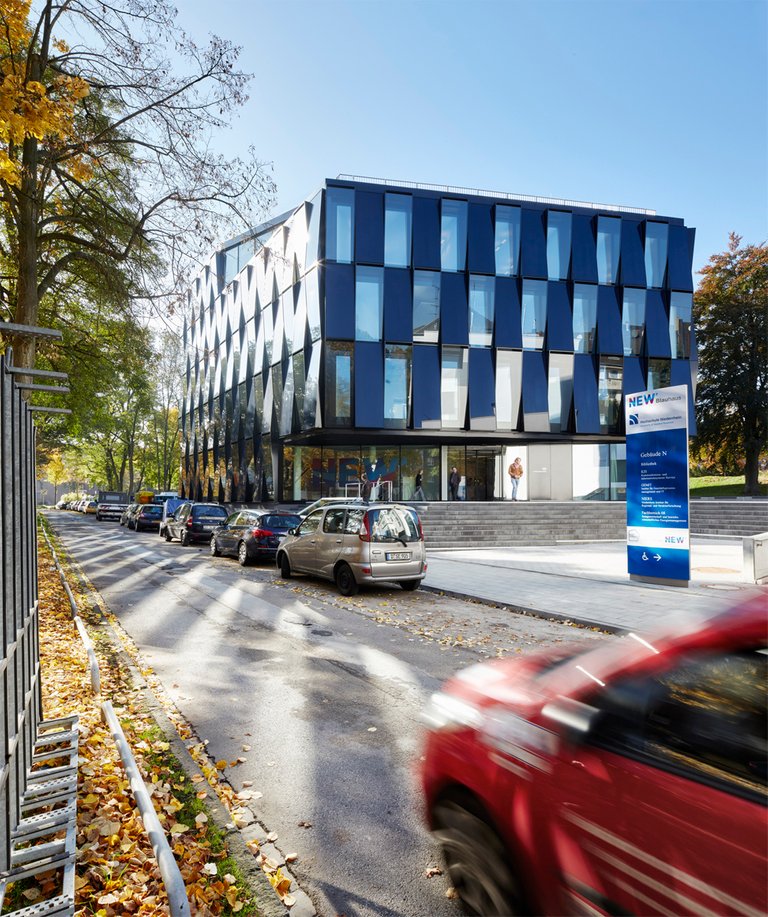
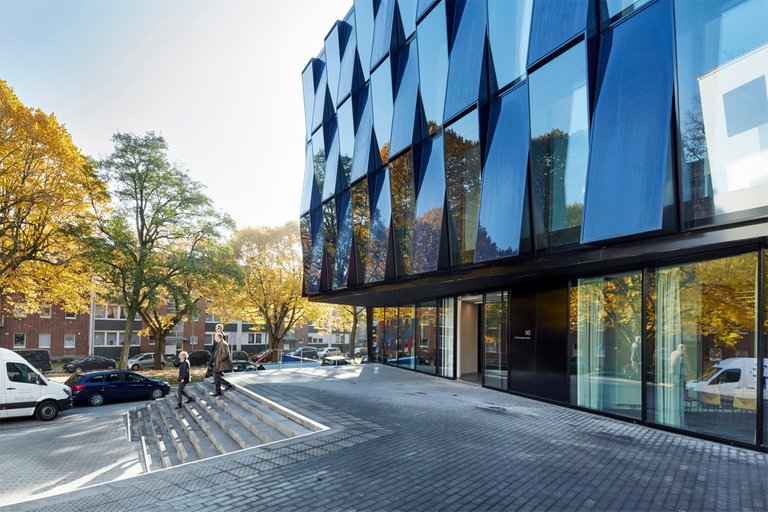
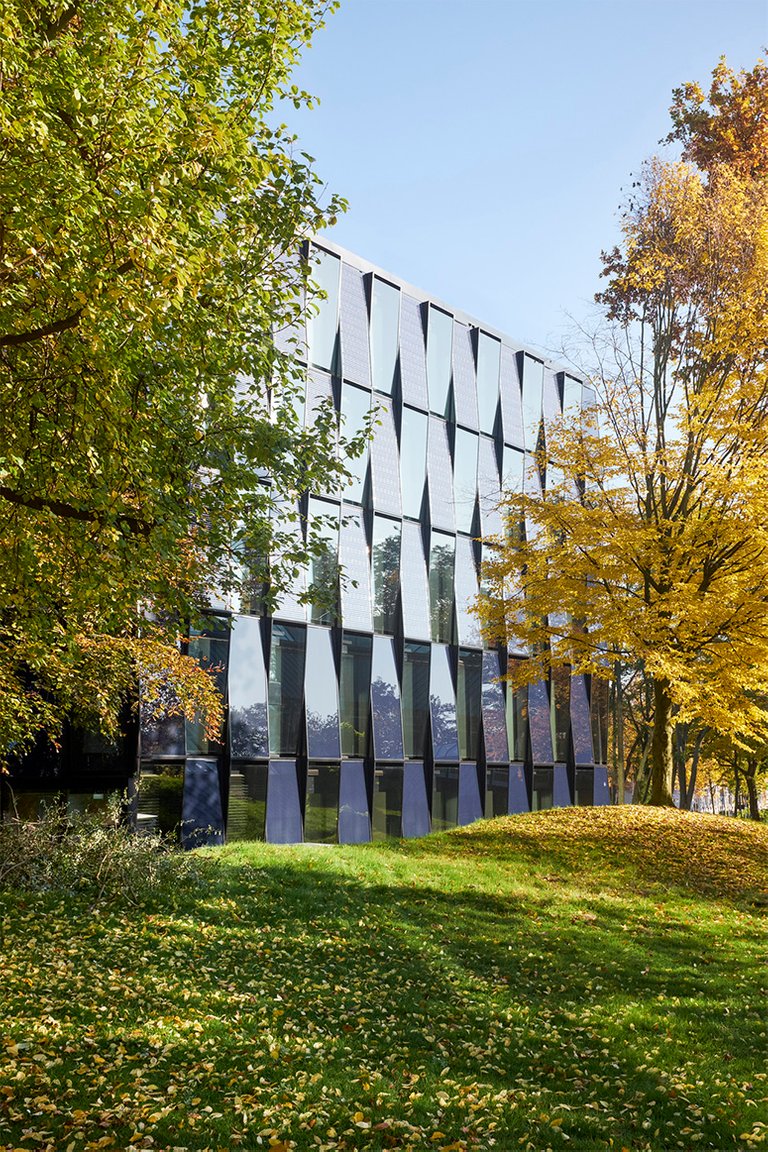
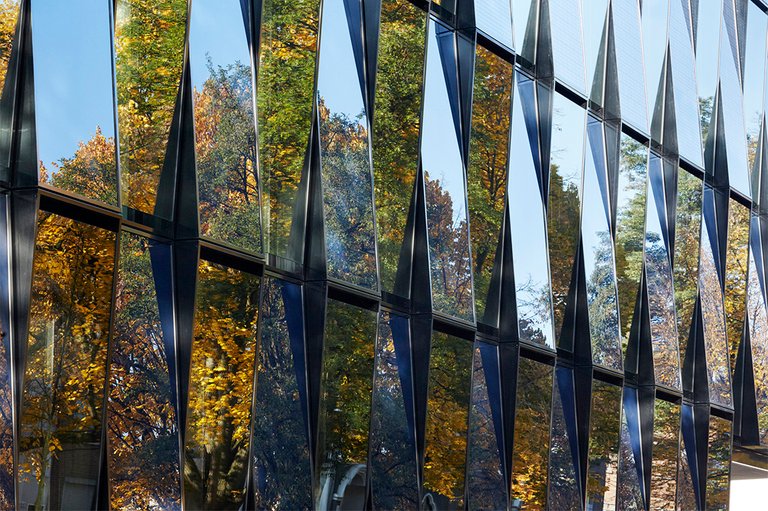
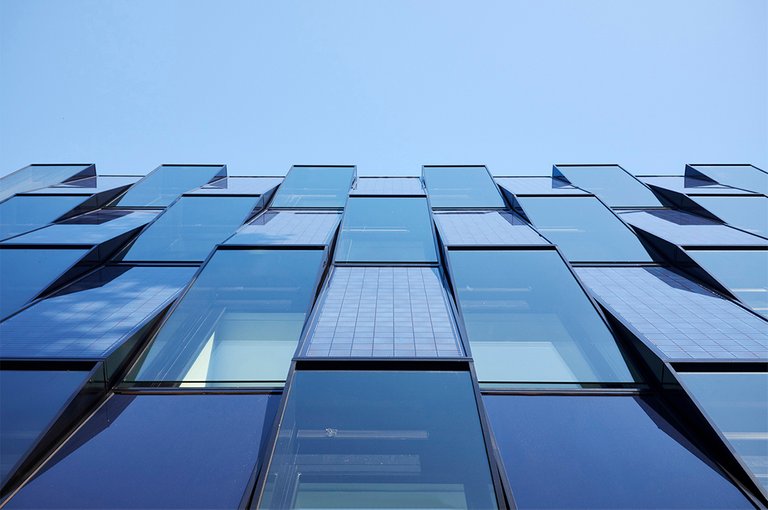
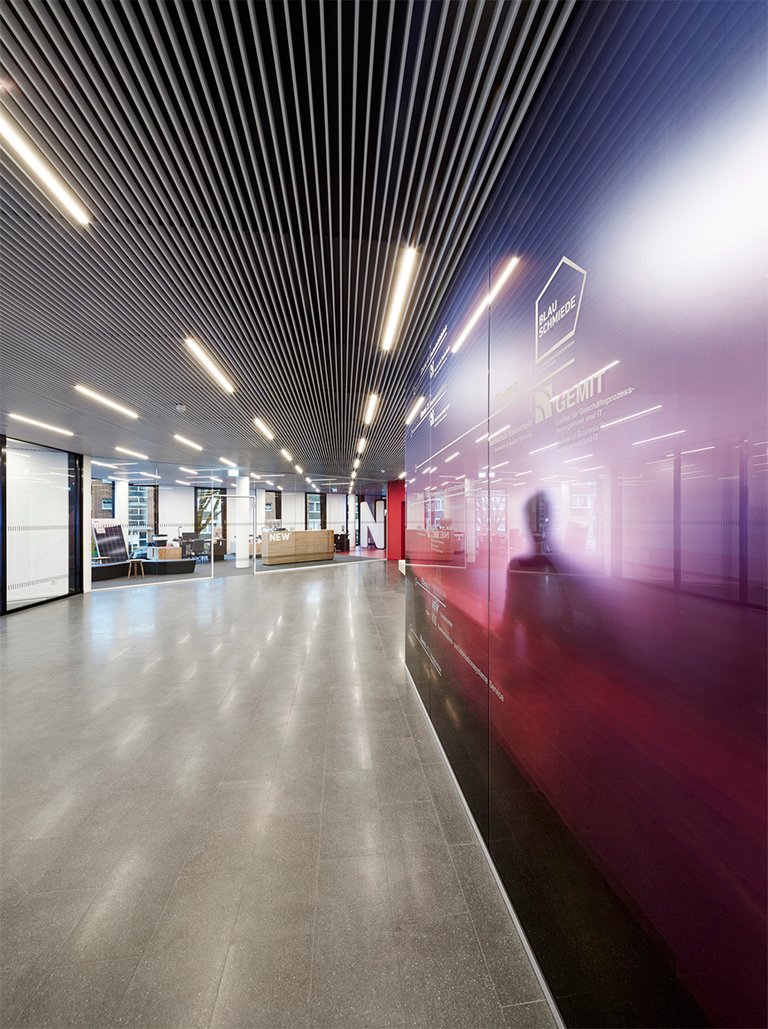
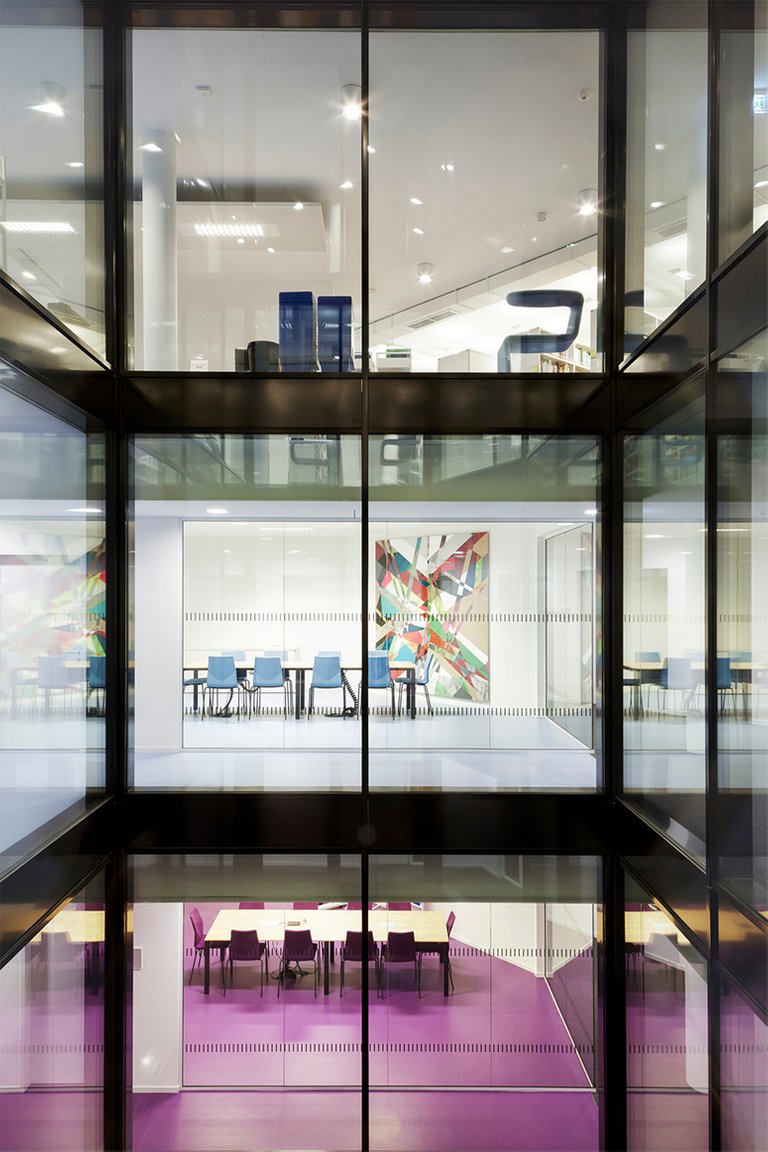
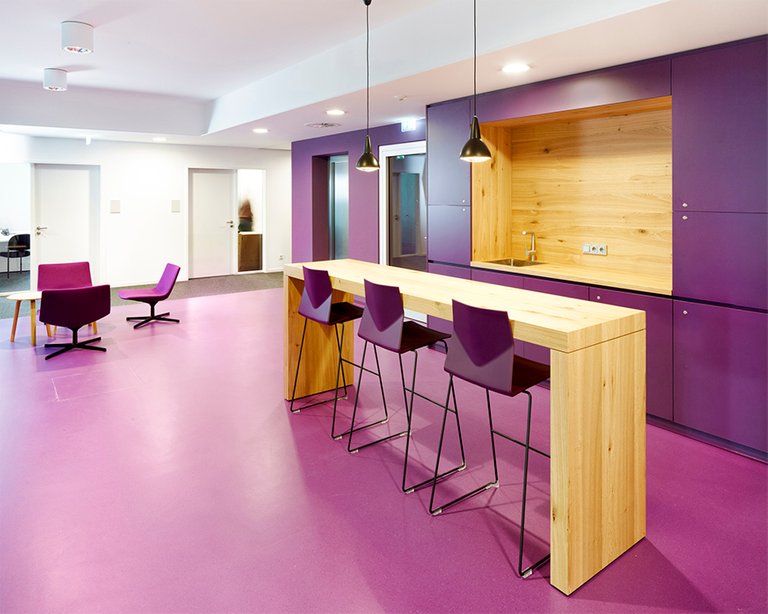
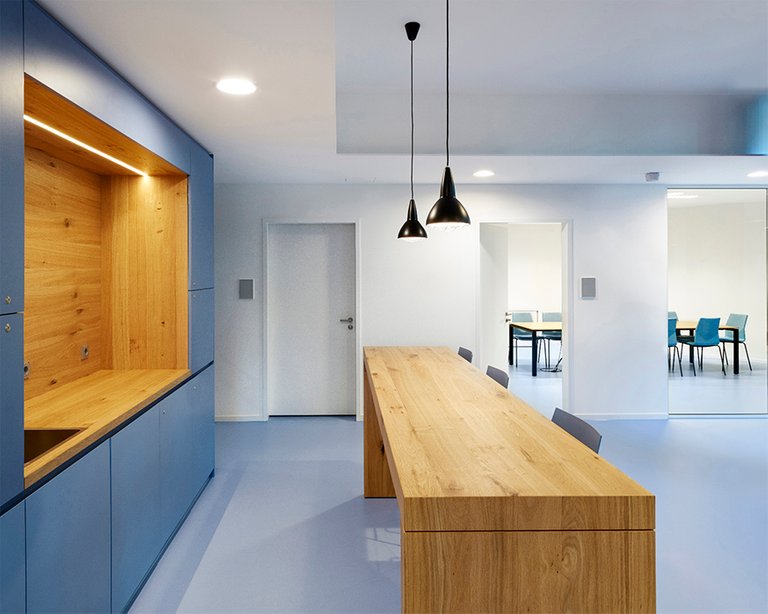
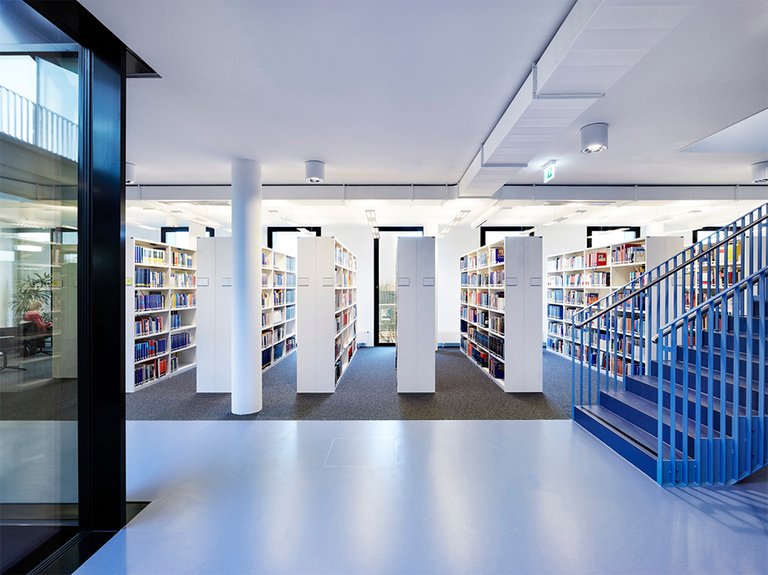
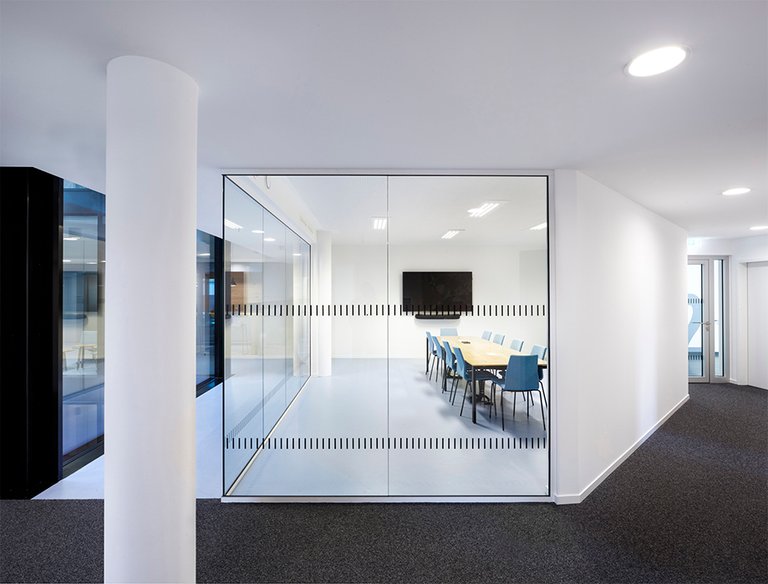
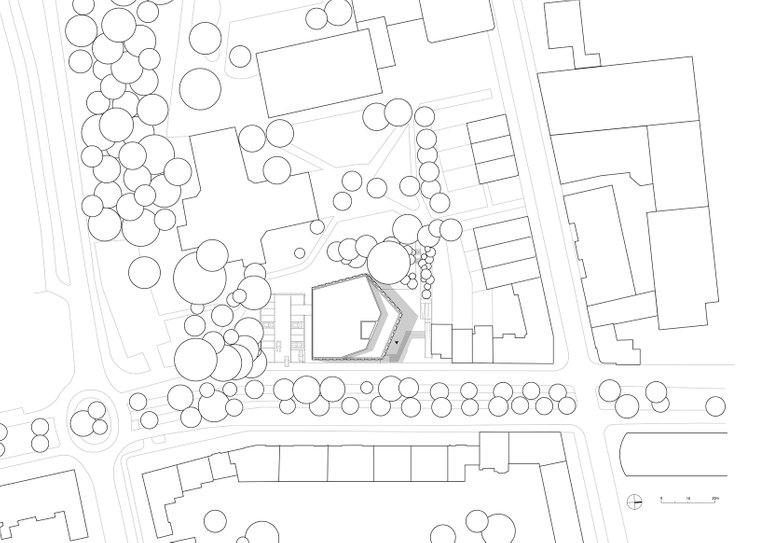
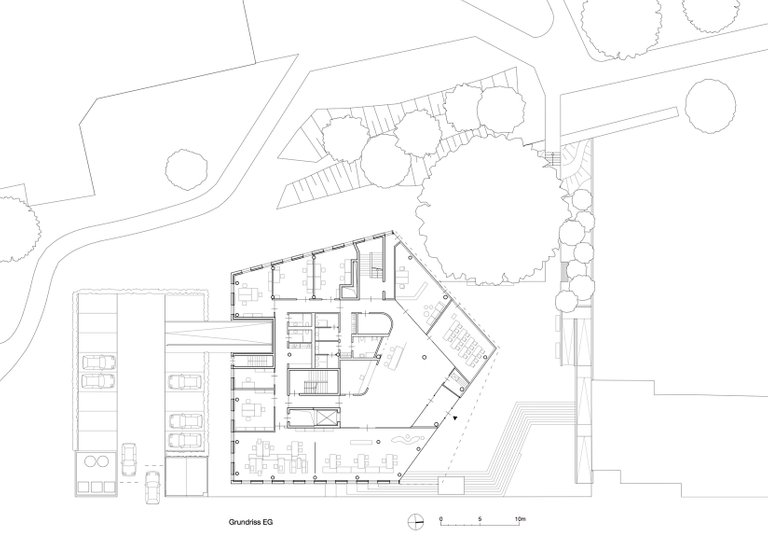
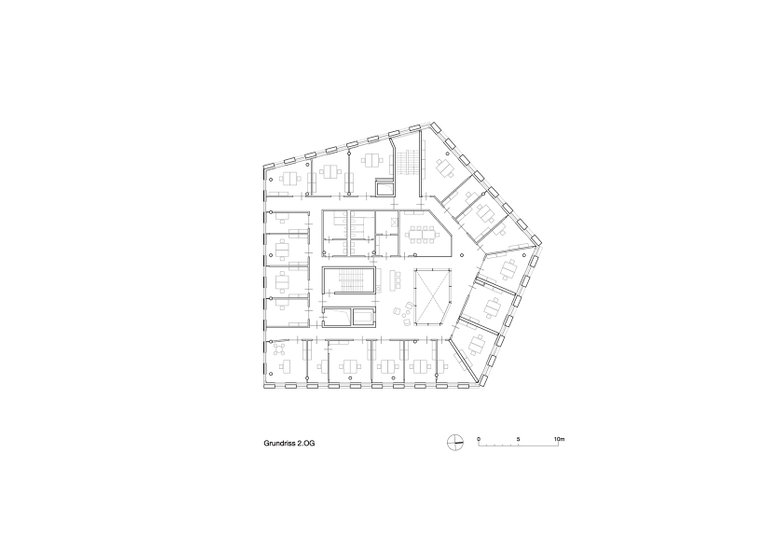
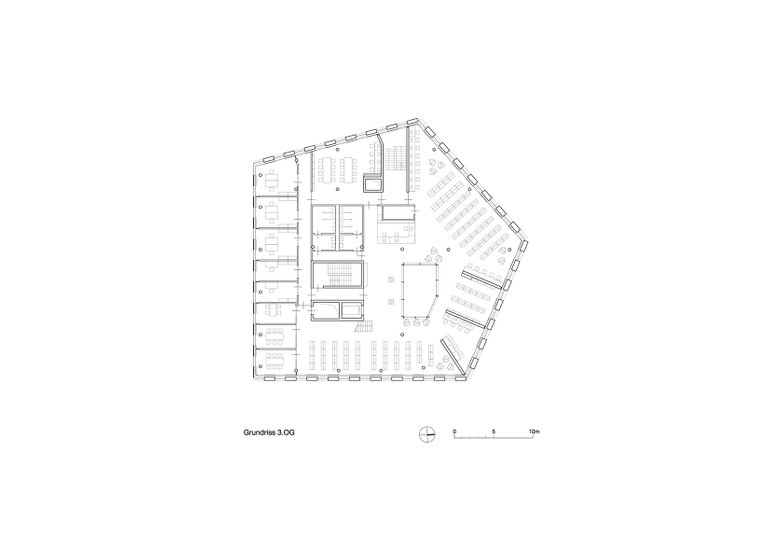
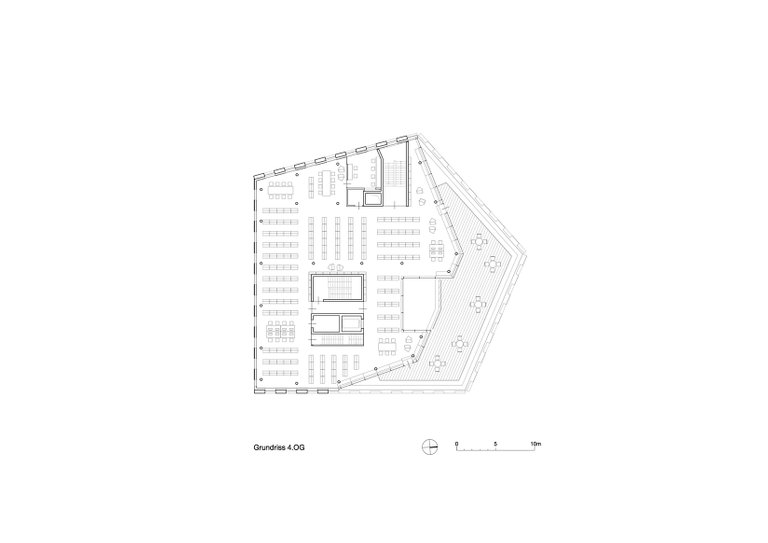
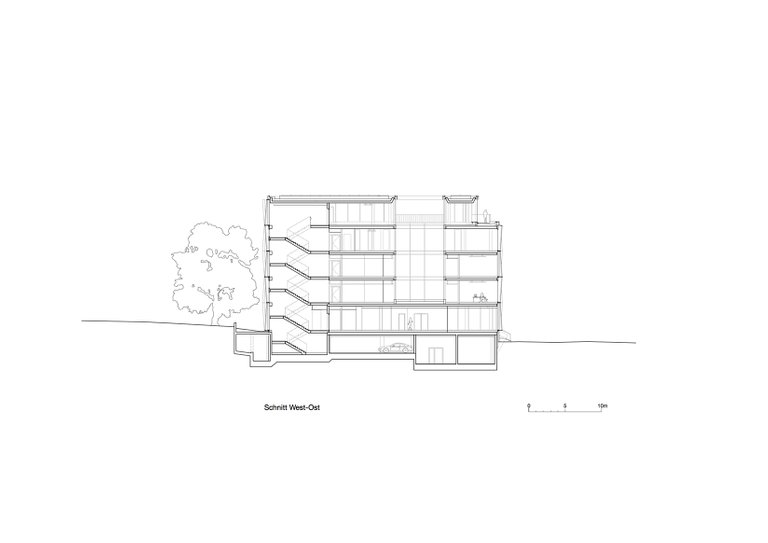
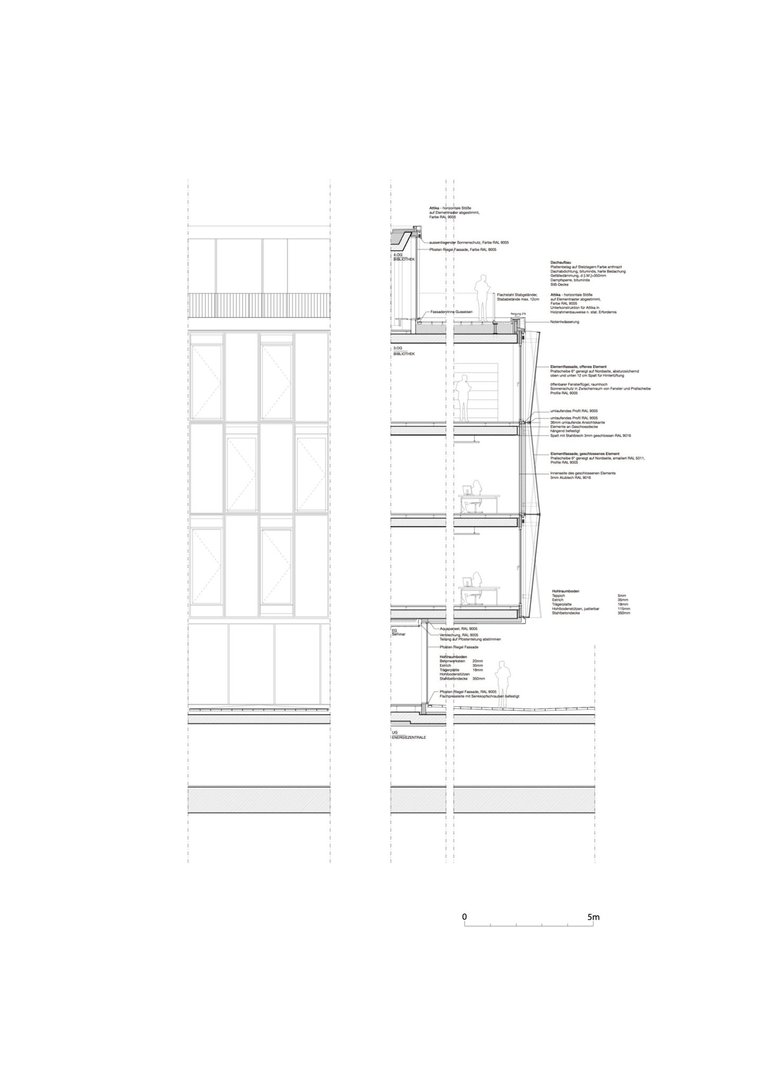
Nice photos, good composition
Hi! I am a robot. I just upvoted you! I found similar content that readers might be interested in:
http://arcdog.com/portfolio/new-blauhaus/
strong architecture photography!